DevOps and the acronyms CI and CD stand out as pillars supporting the continuous innovation engine. Continuous integration, or CI, involves the merging of code changes, building collaboration and productivity through automated builds and tests. On the flip side, continuous delivery and continuous deployment, both termed CD, add layers of complexity.
The quest to decipher the relationship between the CI/CD pipeline and DevOps often sparks discussions across different forums and platforms. To answer all CI vs CD debates, both are a necessity for DevOps best practices.
A quick read of this article should help you unravel the mystery by exploring the fundamentals and the difference between CI and CD within the context of DevOps. As businesses strive for innovation, understanding the unique roles these elements play becomes essential in achieving transformative outcomes through automated development and deployment of software.
How does CI/CD relate to DevOps?
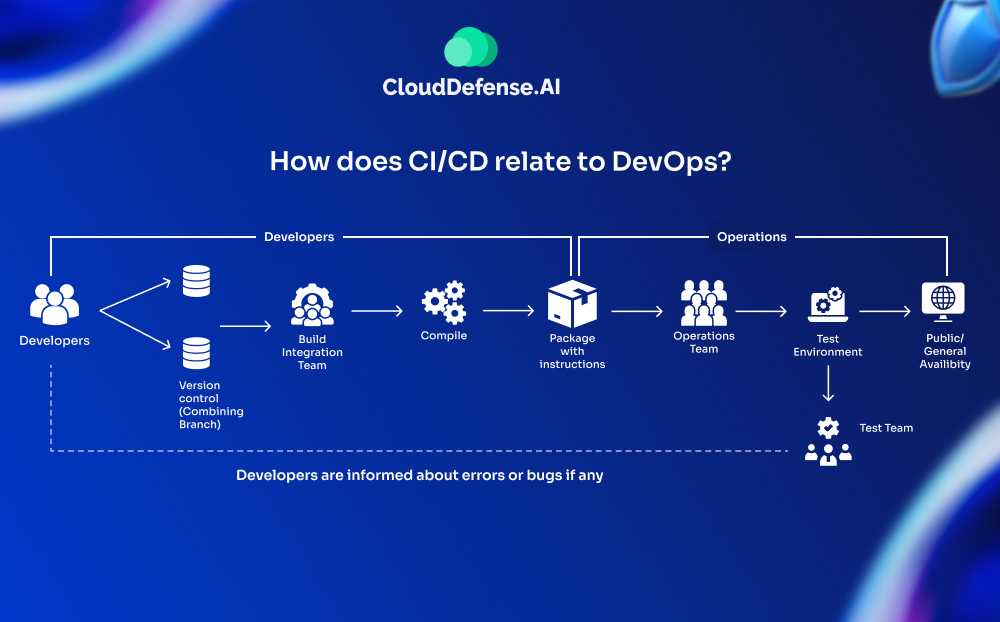
DevOps is a cultural and organizational approach that emphasizes collaboration and communication between development and operations teams throughout the software development lifecycle.
CI/CD practices align with DevOps principles by promoting automation, collaboration, and a continuous feedback loop. They greatly improve the speed, reliability, and efficiency of the software delivery process, contributing to the overall goals of DevOps – faster delivery, frequent releases, and increased collaboration between development and operations teams.
To understand better, CI vs CD is a set of practices and principles within the broader DevOps methodology, working hand-in-hand to smoothen the software development lifecycle and achieve continuous delivery of high-quality software.
Understanding Continuous Integration
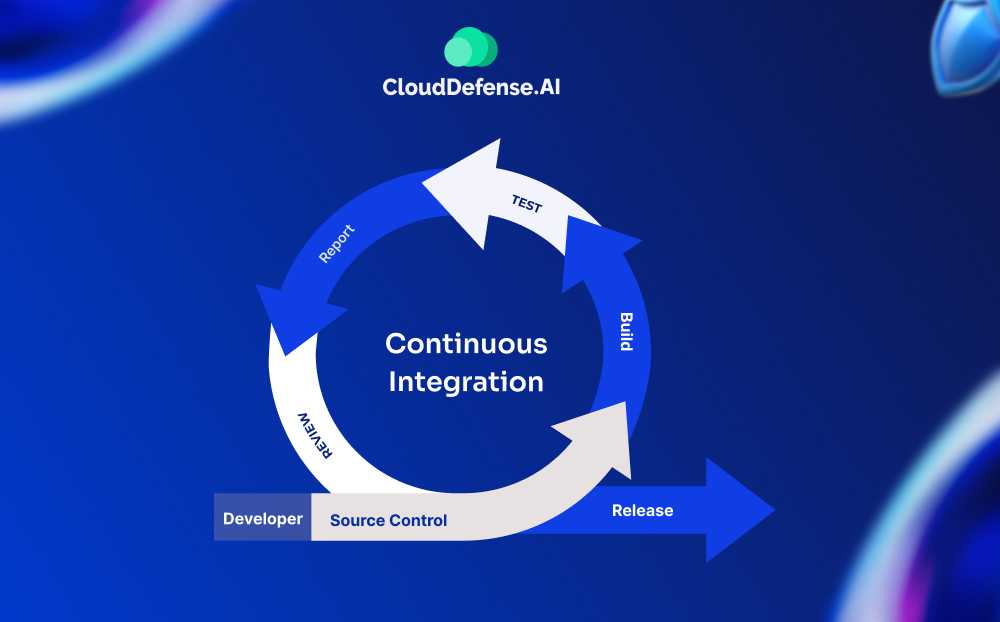
What is Continuous Integration(CI)?
Software development usually involves several programmers working on the same code or various aspects of the same product simultaneously. CI, or continuous integration, is a DevOps practice that frequently integrates the code into the main branch of the shared repository as often as possible.
While it is a coding philosophy, a set of practices also underpins the Continuous Integration pipeline to make it feasible. A core practice of CI is the use of a capable version control system that easily allows small and frequent modifications of code to be checked into a shared repository while religiously tracking minute changes to the codebase. Although testing, especially automated testing, is linked with CI, it isn’t a requirement.
Benefits of Continuous Integration
CI has become widely embraced in the software development lifecycle because of its demonstrable benefits:
Rapid Feedback
CI immediately alerts the DevOps team when a defective bug or error condition has been introduced into the code base. Therefore, errors are spotted early and quickly nipped in the bud.
Process Automation
Verifying check-ins with automated builds makes an elaborate process less prone to human error.
Collaborative Work
CI allows multiple development teams to work in tandem with each other more effectively. This nimbleness ensures the product can meet the evolving needs of a changing market.
Prioritizing Deployments
Using CI, development teams can prioritize what features and fixes are ready to be deployed to production. Wrapping features still under development with feature flags turns these features off when they are deployed with the master branch to production.
These feature flags are a boon to productivity, with 63% of software teams using CI feature flags reporting higher quality software with better testing.
Decreasing Risk
CI reduces risk, especially during releases. The CI/CD pipeline implements continuous testing using automated regression (to ensure that code that was previously functioning properly hasn’t been broken by the new deployments), integration, and a host of other executed tests.
Easy to Follow
Because the difficult processes involved with preparing code for deployment have been abstracted, thanks to automation, it is more likely for members of development teams to buy in and commit their code changes more frequently.
Disadvantages of Continuous Integration
Other than the many benefits, CI does have its fair share of disadvantages as well:
The Burden of Daily Integration
Daily integration is necessary to ensure all developers are on the same level, working on a similar mainline copy. This can’t be possible if a developer withholds their code for too long, say, for more than a day. To prevent other developers from assuming false premises and coding features under outdated assumptions, CI adds a burden to everyone on the development team to deploy code every single day.
The Cost to Implement, Support, and Maintain
Time and effort are required to develop suitable and stable CI automated and test procedures.
Hard to Maintain
The challenge of CI doesn’t stop at implementation: it also demands a concerted effort from all stakeholders to support and maintain it.
Understanding Continuous Delivery
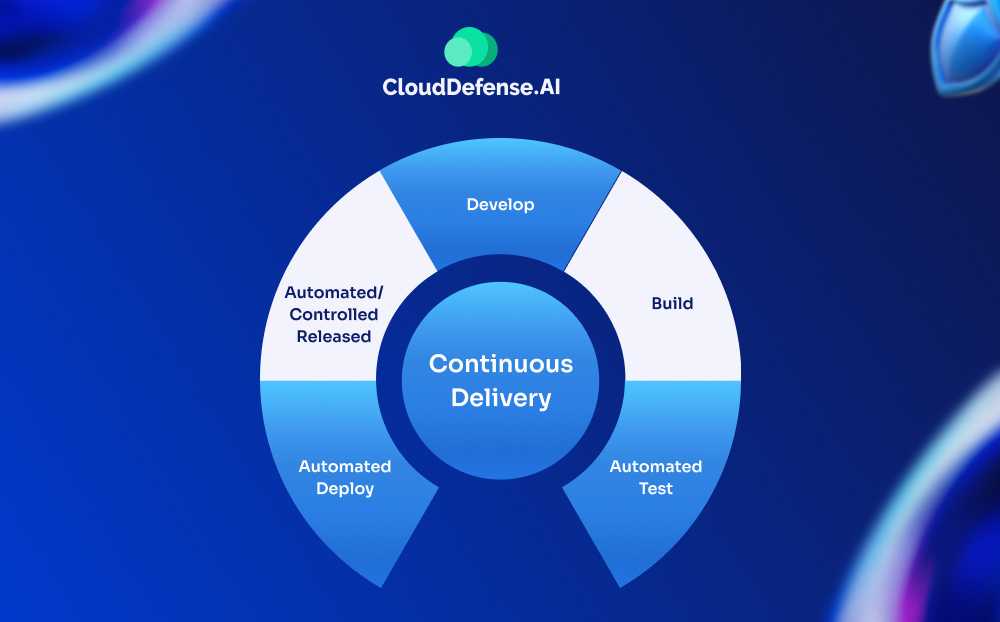
What is Continuous Delivery (CD)?
The software development practice of CD ensures software is always kept in releasable mode. As a natural extension of CI, CD ensures that changes made to a software application are made available to the customer immediately.
The reality of modern software development is that most programmers work with multiple tools and environments that are different from their organization’s test, development, and production system. CD ensures there is a streamlined and automated way to push code to these different and disparate systems without unleashing chaos.
Benefits of Continuous Delivery
Continuous Delivery brings a lot of benefits on its own, in addition to those that flow from its association with CI.
Fault Isolation
Continuous delivery, through automated testing and monitoring systems, makes use of triggering mechanisms to identify when a fault has occurred in the system and makes finding the location of the issue easier to pinpoint.
CD Reduces the Mean Time To Resolution (MTTR)
MTTR measures how quickly broken features are repaired. Essentially, it enables project managers to track how long it takes to recover from a failure in the system.
Since code changes made with CD are smaller, in addition to the help provided by fault isolation in detecting bugs faster, overall MTTR is reduced with Continuous Delivery.
Quicker Release Rates
This builds on the momentum of the faster detection rates fostered by fault isolation and decreased MTTR, which culminates in issues and bugs being repaired faster. When problems are resolved faster, this naturally leads to faster release rates for code features.
Continuous Delivery, boosted by automated testing and CI operations, which constantly merges code into the main project branch, can keep a product’s code in a release-ready state for automatic, or rapid click-button deployment.
Improved Customer Satisfaction
Continuous Delivery enables organizations to quickly add features and update their products to meet the changing business needs and evolving tastes of their customers.
Disadvantages of Continuous Delivery
CD occurs after the CI process has ended but is accompanied by its own set of challenges:
Heavily Dependent on CI
The CD is dependent on a strong foundation in CI; otherwise, it would perpetuate the problems and operate from a weaker position.
Not Suitable for All Infrastructure
It might not suit applications that still use and rely on a legacy technology stack. Surprisingly, as much as 43% of banking applications are still programmed in COBOL.
Cost of Transitioning
Implementing CD requires modifications to workflows, commitment to automate processes, and change in operational culture. This can impact a company’s health care and can take up a lot of a company’s energy, time, and effort.
Understanding Continuous Deployment
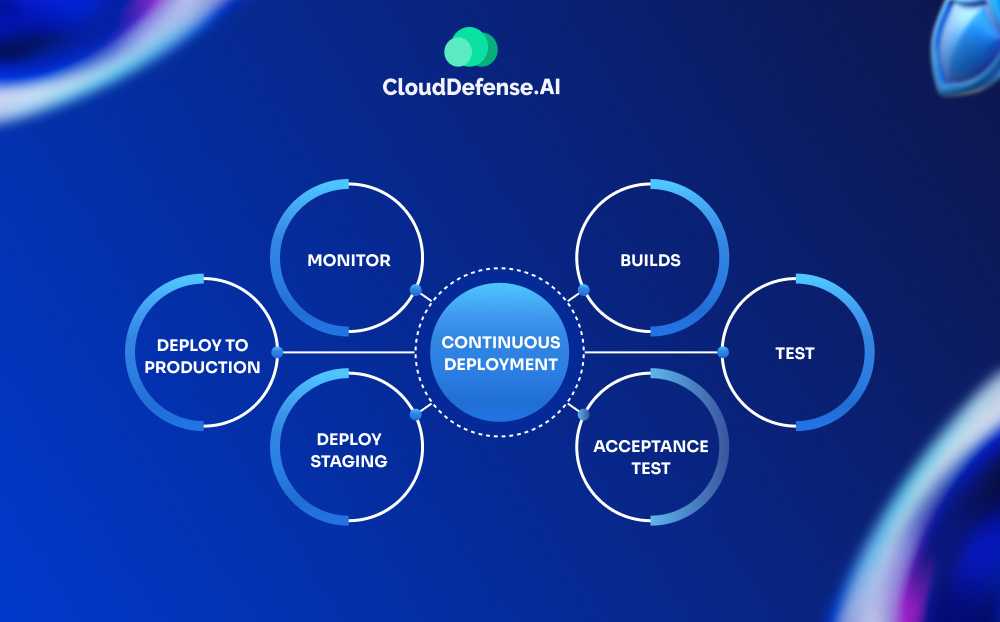
What is Continuous Deployment?
Continuous Deployment is a software development strategy where each code change undergoes an automated journey through a series of tests and inspections before being automatically released into the production environment. This approach aims to smoothen and expedite the software release process by minimizing manual interventions.
Unlike traditional methods, Continuous Deployment removes the reliance on human checks and balances, pushing code changes swiftly into live software. However, it is important to exercise caution and implement Continuous Deployment only when development and IT teams strictly adhere to production-ready practices.
This includes rigorous testing procedures and the application of sophisticated, real-time monitoring and metrics in the production environment. Continuous Deployment proves most effective when supported by dedicated development practices, thorough testing, and monitoring to swiftly identify and address any potential issues with new software releases.
Benefits of Continuous Deployment
Continuous deployment offers development teams a good number of benefits, including:
Swift Software Delivery
Continuous Deployment stands out for its ability to accelerate the execution of code changes, eliminating bottlenecks at every stage of the development pipeline. This means minimal downtime, allowing end users to reap the benefits of new features promptly. Forget the long waits for release cycles – with Continuous Deployment, new functionalities reach users quickly.
Speedy Feedback Loop
Frequent application upgrades mean a shorter feedback loop with customers. Thanks to Continuous Deployment, developers and product managers only wait a few minutes to observe the impact of changes on user behavior. This swift feedback loop facilitates rapid adjustments, making it easier to pivot or change approach based on client behavior. It’s a game-changer for detecting issues and shortening the feedback loop for user-facing modifications.
Reduced Development Risks
Continuous Deployment isn’t just about speed; it’s a risk-reducing strategy. Consistent and frequent integrations keep teams well-informed about the system’s current status, significantly lowering potential risks in the development process.
Automation for Efficiency
Embracing Continuous Deployment encourages engineers to automate various aspects of software development and code release, including testing. This automation not only speeds up the release of new features but also saves valuable time that would otherwise be spent on manual processes.
Building Collaboration
Continuous Deployment isn’t just a technical approach; it’s a mindset that builds collaboration. Teams actively contribute, providing regular input to enhance and improve the product through iterative cycles. It’s a collaborative journey toward excellence in software development.
Disadvantages of Continuous Deployment
Here are some disadvantages that the development team can face with continuous deployment:
Automated Testing vs. Human Touch
In the past, human testing played an important role in uncovering software bugs undetectable by automated processes. Today’s advanced automated testing, while efficient, may raise concerns about the absence of human intervention. A strategic workaround involves deploying the application to a limited user percentage initially, allowing for valuable feedback before a full-scale release.
Expenses
The construction and maintenance of a continuous deployment pipeline can incur substantial costs. Despite the financial commitment, the returns often outweigh the expenses. Project managers who embrace these pipelines frequently witness a compelling return on investment, marked by heightened efficiency and increased user satisfaction.
Addressing Stakeholder Concerns
Stakeholders unfamiliar with continuous deployment might be a bit skeptical, especially regarding the exclusion of human testing. Project managers can reduce these concerns by delivering persuasive pitches that focus on the process’s efficiency. Regular updates on user responses to code changes are also essential in keeping stakeholders informed and assured throughout the project journey.
Difference Between Traditional Methods and CI/CD
Implementation of the CI/CD pipeline has worked like a charm and streamlined a lot of processes that traditional methods were not very efficient at. Here are a few differences between traditional methods and CI/CD.
| Processes | Traditional Methods | CI/CD |
| Development | Before progressing to the subsequent stage, each phase is finalized. | Continuously integrating and testing throughout the software development cycle |
| Testing | Needs to be carried out separately after the development process. | Testing is automated and continuously carried out during the development phase. |
| Release Cycle | Software is only deployed once development and testing have been completed. | Automating the required processes allows to roll out more frequent releases with greater quality. |
| Automation | All processes, such as code integration, testing, and deployment, are manual and carried out by humans. | All processes are automated and continuously run throughout the development lifecycle. |
| Collaboration | Resembles a Silo between the development team and the operations team. | A more collaborative approach that promotes the shared responsibility culture among the developers. |
| Customer Feedback | Customer feedback is not taken into account much. | A continuous delivery process offers constant feedback from customers that helps in improving processes. |
Are CI or CD right for your business or organization?
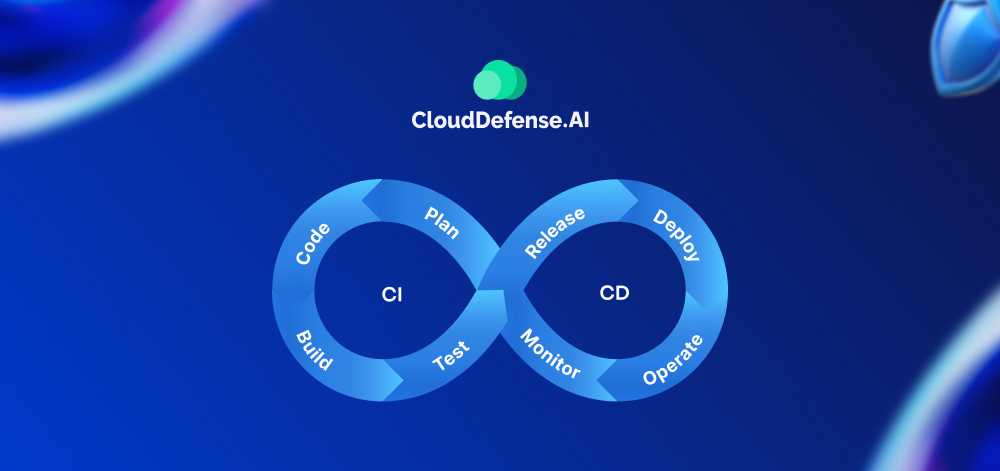
If you happen to be in a fast-paced, highly innovative industry or market, then CI/CD is the right choice for you. Or, if you simply want to respond to customers’ needs, then CI or CD is equally the best bet.
CI and CD have been widely implemented and verified as an agile methodology best practice that allows software development teams to hone in on their core functions, such as addressing business requirements, meeting code quality, and implementing security features.
Automated Processes
Therefore, if you want to relieve the burden on your DevOps team from worrying about extraneous issues like integration and deployment steps, then strongly consider CI/CD since they have automated these processes.
As mentioned earlier, the developer, test, and production environments cannot realistically always be expected to be entirely monolithic in this time and age. CI/CD helps to ensure the environment parameters specific to each system that must be stored before delivery are adequately packaged for deployment.
Other benefits provided are “housekeeping services,” which the automation wrapped around CI/CD handles, like the necessary processes that need to be followed when services are restarted, or applications are deployed, such as making required service calls to databases or web servers.
FAQ
Is Jenkins a CI or CD tool?
Jenkins is an open-source CI/CD automation tool that handles continuous integration, delivery, and deployment of software. The tool is written using Java programming language and is widely referred to by DevOps practitioners to implement CI/CD pipelines.
What is the difference between DevOps and CI CD?
DevOps is a culture that focuses on collaboration between development and operations teams. On the other hand, CI/CD is a subset of DevOps, focusing on automated testing, delivery, and deployment processes to achieve continuous software delivery.
Is Kubernetes a CI/CD tool?
No, Kubernetes is not a CI/CD tool. Kubernetes is an orchestration platform for containerized applications, while CI/CD tools automate the processes of continuous integration, delivery, and deployment in software development pipelines.
Conclusion
Continuous Integration and Continuous Delivery work in tandem to bolster the DevOps capabilities of an organization. The focal point of Continuous Integration is to make the release of software products easier by providing a reliable, consistent, and automated process to build, package together, and test software applications.
Continuous Delivery collects the code stored in the shared repository and continuously delivers it to production. Testing and automation play necessary roles in a CI/CD pipeline. CI and CD are validated by continuous testing mechanisms, which helps fulfill their objective to deliver quality software, enabling organizations to burnish their image to customers by virtue of providing relatively bug-free applications to end-users.







